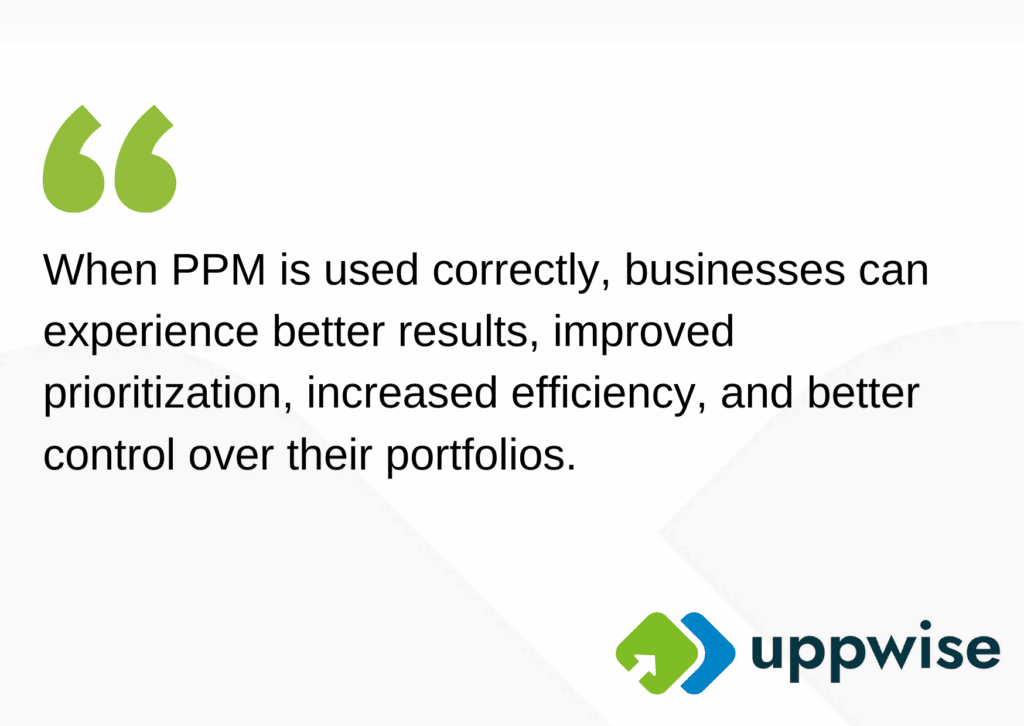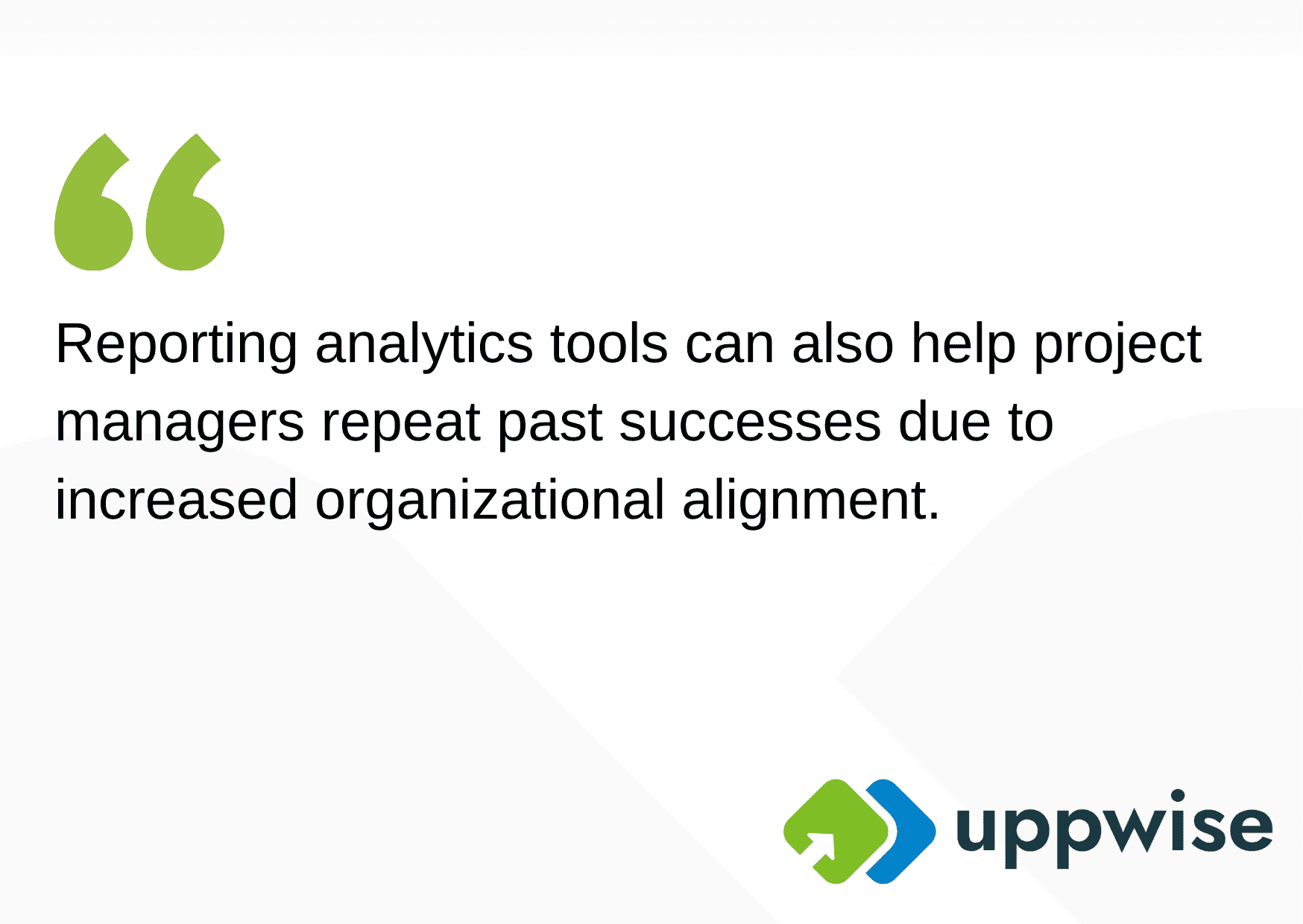
What is The Desired Result of Applying Project Portfolio Management?
The desired results of applying PPM are to analyze each project and work with those that go along with the company’s strategy, goals, and mission.
The project portfolio management system also monitors and controls the company’s strategic projects. Often, many firms discover that most projects are not checked for compatibility with a company’s strategy before the approval for a project can be approved. As a result, such projects do not increase their value or help them gain a competitive advantage according to their goals.
Project management requires project managers to be proactive people. Many projects may be happening simultaneously, making it challenging for them to focus on the important ones first, get the necessary resources and ensure that all the projects are progressing without any issues.
When a project manager is not proactive enough, they may not discover the importance of one project over another. With this, they end up prioritizing projects that will deliver little or no value to their organization. This happens because they do not have the right way of discovering the most important project and the least important ones. PPM can have a negative or positive effect on an organization.
When PPM is used correctly, businesses can experience better results, improved prioritization, increased efficiency, and better control over their portfolios.
When used the wrong way, the result can be disastrous. Employees may get demotivated, results may be very well below standard, and more costs may be incurred. In recent years, the emergence of PPM solutions has ensured that project managers are provided with real-time data and visibility needed to improve profitability and ensure that the project goes smoothly.

Strategic Portfolio Management of various strategic elements such as themes, goals, key objectives, capabilities and value streams. See how works the magic quadrant.
Issues That Project Managers are Trying to Resolve
The four major issues that project managers are trying to resolve are:
- Mismanaged timelines due to lack of adequate visibility into the project
- Budget overrun due to unexpected incurred cost
- Overworked and aggravated employees
- Poor decisionsProject Portfolio Management solutions can resolve these problems by helping in many ways, and many businesses are turning to the use of PPM.
Project managers can have better visibility by using real-time scheduling tools provided by a PPM platform.
PPM tools can increase employee productivity as the need to move between various platforms for information will be eliminated.
It can also help organizations make better decisions and focus on high-priority projects. With this, they can get resources easier and get jobs done faster. Reporting analytics tools can also help project managers repeat past successes due to increased organizational alignment. The desired result of applying the PPM strategy may also include the following:
Seeing the Bigger Picture Clearer
While trying to execute and fix issues in short-term projects, many organizations tend to lose their focus on long-term projects. This often occurs because large projects may take months or years before completion and many issues will arise, and things may need fixing. During this period, an organization may lose resources, get engrossed in these issues, and forget the big project.
With PPM, things will be much easier, and tough decisions will be made according to the organization’s long-term goal.
Increased ROI
The primary aim of any organization is to make continuous profits in terms of finance, operations, regulatory/compliance, or service. Investing in portfolio management tools means you’re empowering your employees, thereby leading to increased predictability, better project success, quick cost-saving decisions, and better return on investment.
Better Project Selection Methods
PPM deals with choosing suitable projects according to organizational goals, resource availability, risk, and other factors.
Project portfolio management includes the use of quantitative and qualitative methods, such as scoring models and ranking methods, and it ensures that decisions that are seen as “bad” or “good” are based on well-defined and relevant criteria and not ambiguous factors.
Better Attention to Objective Business Goals
Over ⅓ of executives reported that lack of well-defined goals and objectives is the primary reason for a company’s failure. Without clear goals and objectives, organizations will not have milestones and targets that will help them measure their progress. PPM provides an opportunity for project managers to ask questions that will ensure that the organization’s needs are being met. All this is possible when the right goals and strategies are clearly defined.
Efficient Use of Resources
Recent research shows that more than ¼ of executive leaders stated that one of the major factors contributing to project failure is resource dependency. The PPM method gives room for a better approach. It offers clarity on how best to utilize resources across projects by considering the available resources at the beginning of a project while reviewing them periodically.
Better Decision-Making
Leaders have lots of decisions to make each day, and it’s very important that they get it right. An excellent decision could be a good turning point in your organization’s history, and a bad one could be disastrous. However, leaders can make great decisions when they’re backed by objective and accurate data.

Constant Monitoring and Controlling
PPM tools help in the connection of optimal portfolio data with available project indicators and if the portfolio performance is up to expectation. Designing tolerance levels and performance thresholds help in identifying possible trends that may impact the portfolio negatively and prevent objectives from being met.
Better Collaboration
In larger organizations, different project teams with different objectives may end up competing. POM addresses this by ensuring that projects are aligned with all strategies and a more standardized and detailed approach to analyze demands from various functions. Project portfolio management also helps to eliminate project redundancies and encourages project managers to work together for a better collaborative environment.
Reduced Organizational Risk
Unlike project management that works on checking the risk of individual projects, PPM offers a broader view by looking at the relationship between the risk and the return profile of the whole project portfolio. With this, an organization can have backup plans in contingencies and provide a foundational framework for better risk management techniques. For companies to get the desired results of applying PPM strategies and enjoy the benefits discussed above, they need to improve their PPM practices.
Founder of Uppwise, Gioacchino has solid hands-on, experience and vision in the PPM Market, gained as a startupper and founder of a number of software & cloud-services companies. During the last two years he has lead the company transformation, shifting from the offering of a traditional PPM product to a new suite of SPM, APM and CWM products.



